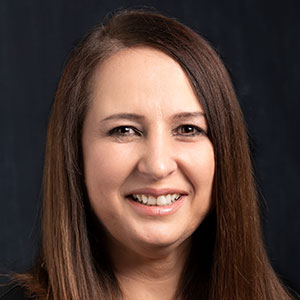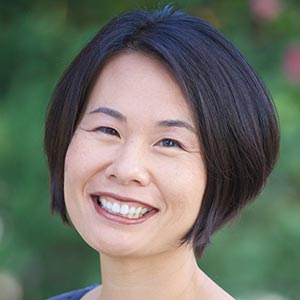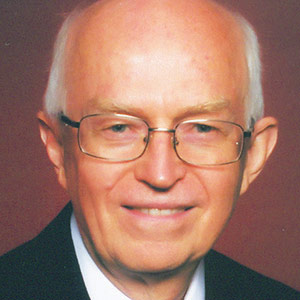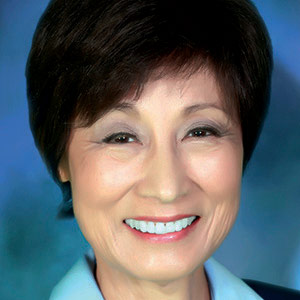Small schools have always been part of the educational landscape in North America and many parts of the world. Rural schools, as well as private elementary and high schools, have historically been small, either by default because of location or by choice because of specialization.1 But while small schools have always existed, attitudes concerning their effectiveness have often been negative. In the early 20th century, for instance, small schools were considered particularly worrisome for educational leaders. They saw the small size as a limitation, or “a chronic inflammation on the body educational”—smallness meant a lack or shortage of many necessary things: resources and school materials, expertise in teachers, and funding for teachers to get more training, as well as the absence of a constructive educational community. Small schools were consolidated into larger ones to combat these problems.2
This perception, however, has begun to change and evolve over the past few years. In the United States, support for small schools and downsizing efforts exists. Government grants and financial contributions from organizations such as the Bill & Melinda Gates Foundation and Ambassador Walter H. Annenberg’s “Challenge to the Nation” have fueled efforts to promote small schools.3 A recent Forbes article, “Why the One-room Schoolhouse Is a Vision for the Future, Not Just a Relic of the Past,” suggests that Montessori schools, home schools, and one-room schoolhouses have the potential to improve educational systems significantly. These schools have been shown to use best practices in peer-based and team-based learning, an abundance of group work necessary for various careers, the ability to work with people of all ages and backgrounds, and to build a strong sense of community. 4
These are truths that the Adventist educational system has long understood and held dear. Small schools—those with three or more grades in one classroom—have existed for decades and are prevalent within our system; in fact, one- and two-teacher schools, the focus of this study, make up 60 percent of the elementary schools in the North American Division (NAD). According to NAD data, in 2022, there were 151 one-teacher schools (down from 161 in 2021),5 and 144 two-teacher schools (same as in 2021).
Small schools have an essential purpose in the Adventist educational system—both from a geographical and philosophical standpoint. They not only serve a population of students who would otherwise be without the option of attending an Adventist school, but also deliver education in a way that truly gets to the heart and purpose of Adventist education.
The Adventist educational system has not been immune to the negative perceptions surrounding small schools—that they lack resources and academic rigor compared to larger schools. Despite the incredible work we witness in our small schools, we have also fallen short in celebrating and acknowledging their efforts and achievements.
This article provides an in-depth examination of a qualitative study that focused specifically on excellent small schools in the NAD. The context for the study stemmed from findings from the 2016 Strengthening Adventist Education study by Thayer and Coria-Navia6 and later published by Leukert, Kido, and Blackmer as part of the work done for the NAD Education Task Group Report7 and the Strengthening Adventist Education Report.8. As Busteed notes, the one-room schoolhouse may be the solution to many American educational woes,9 and the findings from this study certainly highlight the unique positives that can result from education in a small-school setting.
Methods
We started the project by meeting with union directors and associates in the NAD to identify the appropriate framework to use for the study. Educational leaders who were not available for in-person meetings contributed to the framework asynchronously. The NAD’s Journey to Excellence Standards was identified as the framework for the study. The standards included seven student outcomes and six teacher/school outcomes. The current Journey to Excellence Standards document (J2E) has 10 student standards very similar to the seven student outcomes in the previous version, with one addition, Personal Management. The current document does not contain any new teacher/school standards.
We then developed a list of actions/characteristics for students, teachers, pastors, and board members associated with these outcomes. We looked for actions and characteristics that contributed to excellence.
We requested the union directors to select excellent one- to two-teacher schools willing to be included in our study. Sixteen schools in five unions participated. We contacted the teacher/principal in each school and made arrangements for an in-person visit at a convenient time. Two researchers visited one school as a pilot study to refine the data-collection instrument and procedures. The remaining schools were divided among the two researchers.
Each school visit lasted 1.5 to 2 days and included classroom observations, daily activities, and a tour of the school facilities. Additionally, we interviewed a few students (5th grade and up), the teacher(s), some parents (2 to 4), the pastor, the school board chair, and 1 to 2 board members. We looked only for evidence in outcome areas of excellence, although other areas where the schools were good could also have been studied. In addition to direct evidence of excellent outcomes (student work, performances, engagement, etc.), indirect evidence was indicated by enthusiastic comments by many stakeholders (students, teachers, parents, the pastor, and board members).
The following section outlines the outcomes with the performance indicators and the evidence that supported an excellent rating.
Student Outcome 1: Students’ Relationship With Jesus Christ and Commitment to the Adventist Church and Teacher/School Outcome 1: Philosophy and Mission—Spirituality and Adventist Perspective
The most important outcome we wanted to measure was spirituality. It is not just a desirable characteristic; it is an essential characteristic. It is the foundation and the reason Seventh-day Adventist schools exist. Since Student Outcome 1 and Teacher/School Outcome 1 both deal with spirituality, we are combining them in this section.
While there are different approaches and philosophies that can be used to measure spirituality, we chose to examine how students perceived their teachers’ and parents’ goals for them. We did this by observing what children did, how they were active and led out in spiritual things, and their curiosity and love for participation in all aspects of faith-related experiences. On the teachers’ side, we looked for modeling behaviors, enthusiasm about faith, activities in and outside Bible class, a spiritually based curriculum plan, and application of mission and philosophy statements.
In schools that were excellent in this area, pastors and teachers worked as a ministry team in partnership with the parents. All stakeholders praised the teacher-pastor relationships and the home-church-school relationship. Students, teachers, and parents knew when the pastor came to the school and what activities were carried out specifically by the pastor with the students. These activities included Bible studies, Bible class, sports, sermon preparation by the children, participation in church life, and outreach.
We witnessed students leading out in class and school-wide worship in joyful and powerful ways, giving personal testimonies and encouraging their classmates to develop their relationship with Jesus. Students enthusiastically told us about weekly chapels, where the entire student body could participate if they chose—with special music, song leading, Scripture reading, or storytelling. While there was evidence of Bible class being a salient part of the day, it was equally clear that students didn’t relegate spirituality or spiritual lessons to just 45 minutes a day. When we asked them for examples, they spoke of service projects or object lessons their teacher shared throughout the day. Many students also seemed to recognize that their parents chose their school because they wished for them to be in an environment that nurtured their spiritual development. Teachers seemed to be the underlying, sustaining force behind cultivating a spiritual environment in their classrooms. What the students noted about spirituality in their classroom or different activities did not come about randomly; instead, they were the result of their teacher’s intentional and careful planning. The teachers in these schools were genuine and honest about their faith journey and expressed a deep desire to share their love of Jesus with their students. Many whom we spoke with described their vocation as a calling—one in which spiritual mentoring and education were equally crucial to academic content. The Bible classes in these schools were meaningful and exciting, the quality of spiritual activities was evident, and so was the Christian commitment and identity of the teachers.
A critical aspect of this outcome was how spirituality was embedded in the learning environment. The schools were decorated with visuals that reflected spiritual themes, and if there was a church near the school, it was open for students to use during the school day. Both the church and school were inviting spaces for worship, had musical instruments, and were clean and organized. 10
The mission and philosophy of the school were articulated in the interviews with the teacher, students, parents, pastors, and board members, and the school had a spiritual action plan.
Student Outcome 2: Interpersonal Relations—Skills in Interpersonal Relationships
In Student Outcome 2, we looked for evidence of how students dealt with peers and adults from different backgrounds, their understanding and value of diversity, their interactions with peers and adults, how they dealt with conflict, and their understanding of digital citizenship.11
Schools that demonstrated excellence in this outcome taught social skills and self-regulation and were intentional in having students work together in teams regularly. Curricular and non-curricular activities had regular and substantive opportunities for students to engage in social interactions through play and learning. Students talked enthusiastically about being a family and caring for one another. They stated that they desired every student to feel a sense of belonging.
Because of the nature of a small school, in which students in different grades commingle in the same space, students’ friendships did not seem bound by age or level. Often in our observations, we saw 8th graders playing happily alongside 3rd graders, with the conversation and activity evolving organically. Both non-Adventist parents and students shared that interpersonal relationships were among the primary reasons for the parents bringing their children to the school. Many parents noted that their children were bullied in other schools but felt safe and thrived in the small-school environment. Students quickly pointed out how important it was not to bully anyone in person or online.12
Student Outcome 3: Service: Ability to Respond With Sensitivity to the Needs of Others
In Student Outcome 3, we searched for evidence of students’ awareness of service opportunities, their sensitivity to the needs of others, their willingness to engage in service, and their initiative to undertake service activities without being always prompted by the teacher or parents.13
In schools that demonstrated excellence in this area, we noticed an intentional and positive service curriculum encompassing more than just a single act or day. Service to peers, families, church members, and local and global communities was, instead, a state of mind or an attitude of always looking for ways to help. A few students recalled helping one of their classmates move out of a home following a difficult domestic situation. The school provided a safe space to store the family’s belongings while they relocated. Another school looked for specific opportunities to help elderly church members. Students talked about creating cards, knitting scarves, and putting together food baskets to share with those members. And finally, many schools served the local community by having students help to rake yards, participate in health fairs, or conduct food drives. 14
Student Outcome 4: Healthful Living—Accepting Responsibility for Optimal Physical, Mental, and Spiritual Health
In Student Outcome 4, we looked for evidence of students’ values about optimum physical health, how they exhibited actions contributing to physical health, their understanding of good diet and exercise characteristics, and their attitude toward life.
Schools that demonstrated excellence in these areas had a health curriculum and integrated it across daily activities. Students were encouraged and given the time to take regular physical and mental breaks, offered healthy meals, and encouraged to carry these practices into their homes. Many parents told us their children had chosen a vegetarian or plant-based diet because of the teacher’s influence and the school environment. A teacher in one school challenged students to try 30 days of no processed or “junk” foods. The students we spoke with there were enthusiastic about the challenge and tried to hold one another accountable.
Several of the schools we visited had their own vegetable garden. Students were responsible for selecting what would be grown, maintaining individual plots, and harvesting the fruits of their labor. Additionally, some teachers integrated cooking into their curriculum and had students select recipes that could incorporate their freshly picked produce.
Student Outcome 5: Intellectual Development—Academic Achievement and Skill in Decision-making and Problem-solving
In intellectual development, we specifically looked at how students desired to improve intellectually, do excellent work, and demonstrate high academic achievement.
Schools that scored high in this area created a climate of excellence. Students felt that their individual and collective academic success was important. They understood that their teachers had high academic standards and expectations. Children would state that their teacher wanted them to be “successful in life.” Students also mentioned that they had choice and flexibility in their assignments and could make decisions about their learning. 15
One of the clear benefits we observed in these schools was the opportunity for students to progress at their own pace. While students were formally identified as belonging to a specific grade, they often worked at different levels in various subjects. A 4th grader, for instance, might be using the 6th-grade math textbook and 7th-grade spelling workbook. Students also talked about redoing work that was not excellent on the first try without feeling as if they had failed. Parents repeatedly stated how they could see that the teacher deeply cared about academic excellence. They shared how they knew without a doubt that their children were receiving a “quality” education. 16
Student Outcome 6: Skills in Written and Oral Communication
When searching for evidence of communication skills, we looked at evidence that confidence and proficiency in oral and written communication were present in the school.
Schools that excelled in this area integrated many writing and oral communication opportunities across the curriculum. Students made presentations and read stories to one another, participated in school and church plays, and other performance opportunities. Students were encouraged to share their written work, peer review one another’s work, and provide feedback on one another’s presentations.
Student Outcome 7: Aesthetic Appreciation—Students’ Appreciation of the Fine Arts
Measures of excellence in appreciation of the fine arts included how students valued art and music and the development of abilities in fine arts.
Schools that excelled in this area demonstrated intentionality in students playing instruments, singing, and engaging in varied artistic activities. Most schools had a dedicated fine-arts curriculum and teachers who were either hired staff or involved community members. Students’ artwork was showcased in the school, the church, and the community through service projects. Students spoke enthusiastically about playing percussion, recorders, piano, and singing. They also spoke fondly about their use of these abilities for service to others in the form of creating cards and sharing music in hospitals, nursing homes, and community organizations.17
Teacher/School Outcome 2: School Environment and Resources: Physical, Social, Spiritual Environment, Facilities, Supplies, and Equipment (see Teacher/School Outcome 1 above)
For Outcome 2, we observed facilities and evidence of adequate equipment, resources, and supplies. Schools deemed excellent in the school environment and resources outcome provided evidence of adequate funding, best practices in budgeting as shared by the teachers and board members, and strategic plans for maintaining the physical environment’s quality. Maintenance of the physical environment included generous support from church members for supplies and labor, involvement of students in the upkeep of the learning environment, and an up-to-date inventory of equipment and supplies. The learning environments had abundant natural light and were spacious. 18 Classrooms and other learning spaces had flexible seating, and students had input in how to use the learning spaces. 19 Gymnasiums were inviting, and exercise equipment and balls were in good working order. Playgrounds were safe and inviting, and children used them. Schools with these characteristics showed pride of ownership and abundant gratitude for the contributions of the community members to the school. Board members said they find ways to provide “everything the students and teachers need.”
Teacher/School Outcome 3: Teacher Quality and Development—Teacher Pedagogical and Personal Skills
In Outcome 3, we focused on evidence of teacher quality, professional development, and pedagogical and personal skills. Areas of focus were the use of appropriate methods, love for students, reflective practices, fairness, care for the whole person and for all students, differentiation and individualized instruction, and professional growth.
Schools that excelled in this area had teachers with formal training in multigrade instruction; these teachers had worked with a mentor and had a personalized learning plan.20 Schools that exhibited excellence in this area also had very supportive boards, parents, and church members. Teachers mentioned that their conferences provide spaces for teachers to connect and learn with one another. The networks they built in those settings result in collaboration in other areas, such as virtual weeks of prayer or field trips. Teachers were creative and innovative. They used approaches such as project-based learning and entrepreneurship. They supported self-directed student learning, peer collaboration, and the development of social-emotional skills as foundational pedagogies. The teachers were playful and humorous. They leveraged technology as a tool to support student learning and to communicate with families effectively and efficiently.21
Teacher/School Outcome 4: Assessment and School Improvement—Student and School Growth
The indicators of excellence in this area included how assessment results were used to direct learning, how students directed and managed their own learning, how parents were informed about student progress and whether standards-based assessment and reporting were used.22
We found that schools that excelled in this outcome had clear assessment plans that guided the assessment practices. Students were assessed regularly, and rich feedback was provided for student improvement. Students worked with a variety of people and in a variety of ways to receive and give feedback. Teachers, pastors, parents, and students in schools that were excellent in this area repeatedly mentioned growth mindset approaches. Additionally, schools had volunteers who assisted the teacher regularly in individualizing the instruction and feedback. Teachers mentioned receiving appropriate training and continuous support to improve their skills and knowledge. They used internal and external assessment data to make decisions about learning. Teachers who excelled in this outcome worked with teachers at other small schools to routinely analyze and share assessment data. Finally, parents reported that teachers regularly kept them informed of their children’s progress. They appreciated that the teachers had clear lines of communication for academics and for each student’s personal growth and development.23
Teacher/School Outcome 5: Leadership and Administration: Administrative Functions
Outcome 5 focused on how the school leader developed a vision for the school, whether the principal was an instructional leader, and how the principal communicated with internal and external entities. This outcome also focused on whether the principal empowered students to lead, provided support, worked with the school board, supervised and evaluated personnel, and how the school board dealt with school finances.
Schools that excelled in this area had principals who had received training in administration, had professional interactions with other principals, spent time with internal and external entities, and had adequate and regular administrative support for clerical and administrative duties. Principals in these schools worked very closely with the board, were fiscally responsible, and had a clear and inspiring long-term vision for the school. They engaged the parents, the community, and the students in assisting the school in organizing and running fundraising events, community festivals, and outreach programs. Boards in these schools committed to finding ways that every student who wanted to be in the school would have the resources to do so. This commitment extended to non-constituent church students and families.24
Teacher/School Outcome 6: Community and Collaboration—Relationships With External Entities
In Outcome 6, we looked for evidence of whether teachers and pastors formed a ministry team, how the school viewed the church, how the school was viewed by the church and the community, and how the teacher facilitated a relationship between church, home, and school. 25
Pastors and teachers worked as a ministry team in schools that showed excellence in Outcome 6. The pastor had a regular and substantive presence in the school. Students, parents, and board members knew about the pastor’s engagement with the school. Students were enthusiastic about the pastor’s contributions to the school.26 The students also shared with joy their involvement in the church. Non-Adventist parents made an effort to bring their children to church activities and spoke fondly of those opportunities. There was a collaboration between the pastor, the teachers, church members, parents, and students to carry out service activities. There was a formalized marketing, recruitment, and retention plan. School visits were welcoming, informative, and guided by the teacher. The recruitment materials were appealing and inviting. Teachers collaborated with parents of homeschooled children, neighboring schools (Adventist, public, and/or private), and other educational entities.
Looking Forward: Supporting Small Schools by Fostering Excellence
Noting the percentage of small and multigrade schools (more than 60 percent of elementary schools in the NAD have three or fewer teachers),27 we recognize that small schools and their dedicated teachers are essential to the ecology of Seventh-day Adventist educational institutions. Students in excellent small schools are thriving. When we visited high-quality small schools, we noticed a sense of belonging and strong social ties among the students, teachers, parents, and church members. We also noticed rigorous academics and curious children who care for one another and can work well individually and in groups. We felt that teachers and pastors worked as a ministry team, and that board members and the entire church community were invested in the school. Students, teachers, parents, pastors and church members together build this positive environment for teaching and learning together through their shared mission. As we move forward, how can we ensure that all small schools are centers of excellence, providing these same opportunities for their students? We recognize that all small schools can capitalize on their strengths while growing in areas where they may experience challenges. To support ongoing development, teachers in small schools may wish to evaluate their own practices and focus on areas using as a guide the outcomes and indicators described in this article (see Sidebar 1) as well as the synthesized questions. Unions and institutions of higher education can also tailor professional development to support the unique challenges and opportunities in multigrade classrooms, as well as honoring the multiple roles that teachers in small schools may fill. Small schools and multigrade classrooms provide great opportunities to meet student needs, and to foster our collective journey in supporting excellence.
This article has been peer reviewed.
Recommended citation:
Anneris Coria-Navia et al., “Highlighting Excellence in Small Schools,” The Journal of Adventist Education 84:3 (2022): 4-11. https://doi.org/10.55668/OOUM5695
NOTES AND REFERENCES
- Kenneth A. Strike, “Small Schools: Size or Community?” American Journal of Education 114:3 (2008): 169-190: http://www.jstor.org/stable/10.1086/529499; Tom Vander Ark, “Personalization: Making Every School a Small School,” Principal Leadership 2:6 (2002): 1-14.
- Warren C. Seyfert, “The Small-School Co-operative,” The School Review 47:4 (April 1939): 270-279: http://www.jstor.org/stable/1081053.
- Mary Anne Raywid, “The Policy Environments of Small Schools and Schools-Within-Schools,” Educational Leadership 59:5 (February 1, 2002): 47-51; Tom Vander Ark, “Personalization: Making Every School a Small School”; _________, “The Case for Small High Schools,” ibid. 59:5 (2002): 55-59: https://www.ascd.org/el/articles/the-case-for-small-high-schools.
- Brandon Busteed, “Why the One-room Schoolhouse is a Vision for the Future, Not Just a Relic of the Past,” Forbes (November 7, 2020): https://www.forbes.com/sites/brandonbusteed/2020/11/07/why-the-one-room-schoolhouse-is-a-vision-for-the-future-not-just-a-relic-of-the-past/?sh=4b1bc9ac29fa.
- North American Division of Seventh-day Adventists, 2022-2023 Adventist Education Statistics: https://v1.adventisteducation.org/stat.html.
- Anneris Coria-Navia and Jerome Thayer, “Strengthening Adventist Education,” North American Division (NAD) research report (2016): https://circle.adventistlearningcommunity.com/files/download/strengthenae.pdf.
- NAD Education Taskforce Final Report (October 2016): https://circle.adventistlearningcommunity.com/download/NADET2016Final.pdf.
- Jerome Thayer et al., “Strengthening Adventist Education in the North American Division—Recommendations for Educators,” The Journal of Adventist Education 79:3 (April–June 2017): 32-37: https://circle.adventistlearningcommunity.com/files/jae/en/jae201779033207.pdf.
- Busteed, “Why the One-room Schoolhouse Is a Vision for the Future, Not Just a Relic of the Past.”
- Thayer et al., “Strengthening Adventist Education in the North American Division—Recommendations for Educators.”
- S. Samuel, “New Trend: Teaching and Learning in a Multi Age Class Room,” International Journal of Advance Research and Innovation Ideas in Education 2:3 (2017): 114–117.
- James Seth Caudill, One-room Schools and Their Role in the Development of the Appalachian Hills of West Virginia: 1863-1940s. Master’s Thesis, West Virginia University, 2010. Graduate Theses, Dissertations, and Problem Reports, 771: https://researchrepository.wvu.edu/cgi/viewcontent.cgi?article=1774&context=etd.
- Kristin Simonson, “Multiage Learning Environments in the Secondary Montessori Classroom.” University of Wisconsin—River Falls, 2015: https://minds.wisconsin.edu/bitstream/handle/1793/72511/KristinSimonson.pdf?sequence=1&isAllowed=y.
- Caleb M. Lang, One-room House. Master’s Thesis, University of Cincinnati, Ohio, 2020: http://rave.ohiolink.edu/etdc/view?acc_num=ucin1592134412178956.
- Mike Wilkinson, “Michigan’s One-room Schoolhouses Make One Last Stand,” Bridge Michigan (2015): https://www.bridgemi.com/talent-education/michigans-one-room-schoolhouses-make-one-last-stand.
- Kevin J. Smith, “The One-room Schoolhouse Today: Living History, Looking Forward,” Online Research at Cardiff (2012): https://orca.cardiff.ac.uk/id/eprint/46847/1/46847.pdf.
- William Obertson, “The Oasis Skateboard Factory: Return to the One-room Schoolhouse,” International Journal for Innovation Education and Research (IJIER) 7:3 (2019): 162–171. doi.10.31686/ijier.vol7.iss3.1374.
- Eli Blevis, “The One Room School House and Design Challenge Based Learning for Design-oriented HCI Education: Initial Results, Reflective Hypotheses, and Collaborative Issues,” International Conference on Collaboration Technologies and Systems (CTS) (2012), 359-366. doi.10.1109/CTS.2012.6261075.
- Lang, One-room House.
- Lindsey Blais Cundra, Caroline Ann Benzel, and James Reid Schwebach, “Using the One-room Schoolhouse Method: The Design and Teaching of a Summer Undergraduate Research Course in Phage Biology,” Perspective on Undergraduate Research and Mentoring, 6:1 (2016): 1-12.
- Kajal Shah and Mimi Lee, “Building an Interactive One Room School Experience in Second Life: An Example of TPACK at Work.” In D. Gibson and B. Dodge, eds., Proceedings of SITE 2010. Society for Information Technology & Teacher Education International Conference, 2064-2070. San Diego, Calif.: Association for the Advancement of Computing in Education (AACE): https://www.learntechlib.org/primary/p/33665/.
- Megan Kaesshaefer, “Tales From a One-room Schoolhouse,” Instructor 120:5 (2011): 60–63.
- Caudill, One-room Schools and Their Role in the Development of the Appalachian Hills of West Virginia: 1863-1940s, 771.
- Ibid.
- Simonson, “Multiage Learning Environments in the Secondary Montessori Classroom.”
- Thayer et al., “Strengthening Adventist Education in the North American Division— Recommendations for Educators.”
- NAD Office of Education, 2022-2023: https://v1.adventisteducation.org/stat.html.








